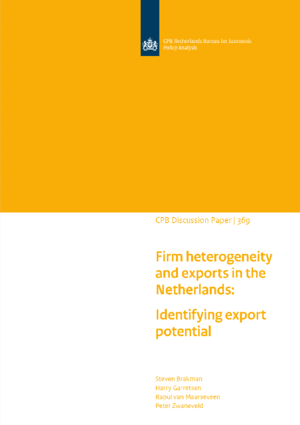January 18, 2018
Firm heterogeneity and exports in the Netherlands: Identifying export potential
According to the Melitz (2003) model, potential exporters have to be sufficiently productive to overcome the entry costs of foreign markets. Once firms pass this productivity threshold, they all export. However, empirical evidence indicates that a substantial share of high-productive firms do not export. Stimulating these highly productive firms to export is of interest to policy makers, as this provides these firms with new growth opportunities. In this paper, we focus specifically on this group of high-productive non-exporters and identify the factors that might prevent them from successfully exporting.
We employ a large micro-dataset for Dutch firms both in services and manufacturing for the period 2010-2014. Our findings are threefold. First, high productivity is an important, but not a sufficient condition for exporting. Firm size (substitute for productivity), import status, and foreign ownership are also important. Second, firm location is crucial. A location in peripheral areas prevents high productive firms from exporting; especially a location in the Northern part of the Netherlands reduces the probability to export. Third, our set-up identifies individual firms that are potential exporters.
Downloads
Authors

Raoul van Maarseveen
Steven Brakman (RUG)
Harry Garretsen (RUG)
